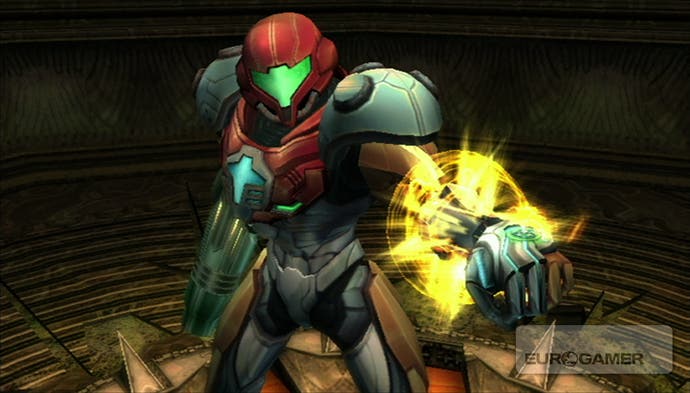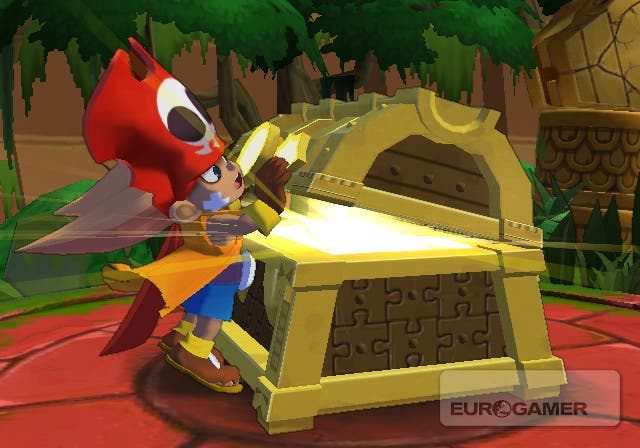Wii: 2007's Most Wanted
Something for the Wii-kend?
Super Paper Mario
- Gamepage
- Screenshots
- Release Date: 14th Sep 2007
Over five months on from its American release, Nintendo's platform-RPG has lost little of its appealing hype. The hybrid 2D/3D game mechanics - whereby environments can be popped into and out of 3D to solve puzzles - bring to mind SEGA's recent PSP triumph Crush. But, unlike that game's brooding visuals, Nintendo's bright palette and story will likely convince a far wider audience of the idea's merits.
The Paper Mario games have, in many ways, revealed that there's another, more appealing and accessible way to explore the Japanese RPG (and remember that the first title, Super Mario RPG, was in fact designed by Squaresoft themselves). Indeed, despite the Fisher Price looks and sheen, these have been some of the very best examples of the genre, perhaps because they adhere to scant few of its aged rules. If Super Paper Mario can continue the graceful and enjoyable arc started by its GameCube forbear, it will be have been a worthwhile wait.
Metroid Prime: Corruption
- Gamepage
- Screenshots
- Release Date: TBC
Where Konami has routinely struggled to make sense of Castlevania's beautiful 2D gameplay in a 3D world, US-based Retro Studios has been more successful with Metroid's transition. While the previous two games divided fans, on the whole they were enjoyable first-person adventuring titles that wisely placed more emphasis on exploration than on frantic shooting. Despite being set shortly after the events of the GameCube's Metroid Prime: Echoes, this third titles looks to have shifted the focus of gameplay onto first-person shooting, to the delight or horror of watching gamers.

In part this is thanks to a new control scheme that should prove faster and slicker than on the Cube. The Wiimote pointer will aim Samus' arm cannon while the nunchuck will control the grappling beam allowing for a faster pace and, according to the developer, gentler difficulty. Undoubtedly the game will still showcase the non-linearity (or at least the illusion of non-linearity) that has marked the series to date, but whether the shift in mechanical emphasis adds to or subtracts from its fanbase remains to be seen.
Zack & Wiki: Quest for Barbaros' Treasure
- Gamepage
- Screenshots
- Release Date: Autumn 2007
Aside from its recent brush with jihad, Zack & Wiki: Quest for Barbaros' Treasure is coming in to what looks to be a successful landing. One of the few exclusive, third party, new IPs for the Wii, Kristan described it earlier in the year as 'a title of immense quality'.

The eponymous Zack and Wiki are on a quest to resuscitate deceased pirate Barbaros by piecing back together his scattered body parts in order to then steal his treasure. As a third-person action-adventure one of the most exciting elements to the game is its apparently varied and inventive use of the Wiimote. Context-sensitive actions within barmy scenarios promise to keep the action fresh and engaging as you work through a series of self-contained missions.
The game's puzzles appear to be logical and sensible, which should in turn lead to this being a satisfying experience. Despite the loss of Clover Studios, with Zack and Wiki Capcom demonstrates its continued dedication to innovative and different videogames, and it's perhaps only natural that their most adventurous work looks to be hosted on Nintendo's hardware.
Fire Emblem: Goddess of Dawn
- Gamepage
- Release Date: 2007

Intelligent System's Fire Emblem series is basically an Advance Wars costume drama for obsessive-compulsive nerds with a saviour-complex. Unlike the company's other strategy series, lost units (who here are characters with names and eyes and stories) are lost forever, cut from the plot and team leaving a gaping void where their skills and dialogue once played out. Many are the players who've never made it through to the end of a Fire Emblem game for want of a mean streak.
Goddess of Dawn seems to be a logical evolution to the previous game in the series, the GameCube's excellent Fire Emblem: Path of Radiance. There are scant few innovations here but for many fans of the series, consistency is all that's required. 42 characters return from the previous game with an addition 30 new ones populating the game's 45 chapters. For players unable to move on from a battle in which a comrade fell, this might be videogaming's greatest challenge yet.








